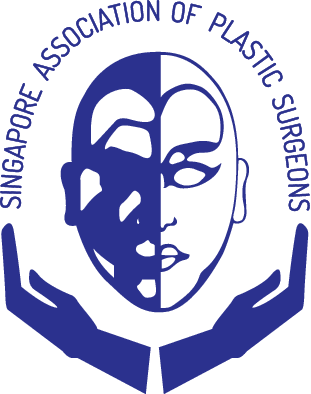FACIAL TRAUMA
Author: Dr Cheong Ee Cherk
Road traffic accidents and falls are the most common causes of traumatic facial injuries in Singapore. These could result in swelling, bruising or open wounds of the face and can also cause facial bone fractures.
Depending on the severity of the injuries and the extent of soft tissue (ie. skin) wounds, the resultant scarring and facial deformities from facial bone fractures vary greatly.
Facial deformities affect the patients psychosocially. These injuries can also affect the various functions of the eye, nose and mouth. Patients may complain of seeing double images when eye movements are affected when there are injuries to the eye socket called orbit. They can experience obstructed nose breathing if there are nasal bone fractures. When there is fracture of the jaw bones, they may have difficulty with mouth-opening, or have severe pain in moving the jaws. Malocclusion results when the upper and lower rows of teeth are not biting together or in same way as before the injury.
TREATMENT
All facial wounds should be properly evaluated, cleansed and dressed. If the wounds are deeper, they should be meticulously debrided(cleansed of dirty or non-viable tissues) and stitched precisely for optimal healing and scar outcome. Specialized treatment is needed if the wound is communicating with underlying bone, especially if the bone is fractured.
Management of facial fractures takes into consideration two aspects of the facial skeleton that fractures will affect, that of function and form. Fractures which have no separation or only mild separation of the bone fragments may be managed conservatively and allowed to heal as they are without surgery. This will generally take about 6-8 weeks. If any of the functions are affected or if the bony fragments' displacement is severe, surgery will be indicated so that patients do not have compromised functions affecting daily life or have permanent facial deformities. They will need surgery to reposition the bone fragments into good positions relative to each other and held in that position by plates and screws for bone healing to occur in a surgery called open reduction and internal fixation (ORIF) of the fractures. Displaced fractures that are not reduced will heal in their displaced configuration and result in permanent deformities which will require complex surgery to correct.
COMPLICATIONS AND MANAGEMENT
Bruising and swelling can be expected and will abate gradually over the subsequent weeks. Ice packs and sleeping with head elevation of at least 30 degrees can be helpful in the initial few days to help reduce the swelling.
If surgery were to involve the bony eye socket called orbit, seeing double images after orbital surgery is common. This usually resolves over a few days to weeks but can become permanent in some rare cases.Blindness is an extremely rare complication and its likelihood depends on the nature and extent of the surgery.
Infection after ORIF is fortunately also uncommon. If infection occurs, it can lead to loosening of implants from the bone. This may necessitate the removal of these implants before the infection can be treated. This remains the main indication for the uncommon practice of removing these inert biocompatible titanium implants which are otherwise left in situ in the facial skeleton permanently.
Residual facial asymmetry can sometimes persist despite good bony reconstruction. One effective option is to camouflage these with autologous fat grafts to achieve better overall symmetry.
